Outforia Quicktake: Key Takeaways
- The Antarctic Desert is the largest desert in the world, covering 5.4 million square miles (14 million sq km) with only about 110,039 square miles (285,000 sq km) ice-free.
- Deserts are defined by their average precipitation per year, not by their temperature, and can be hot or cold.
- Different types of deserts include hot, polar or cold, semi-arid or warm, and coastal deserts.
- The Sahara Desert is the largest hot desert, covering 3.32 million square miles (8.6 million sq km), while the Chihuahuan Desert is the largest desert in North America.
- Climate change and human activity are impacting desert ecosystems, causing desertification and threatening various plant and animal species.
When you hear the word desert, you may imagine a hot, dry, and sandy wasteland with little vegetation. Although the Sahara is the largest hot desert, the Antarctic Desert is actually the largest desert in the world.
What is a Desert?
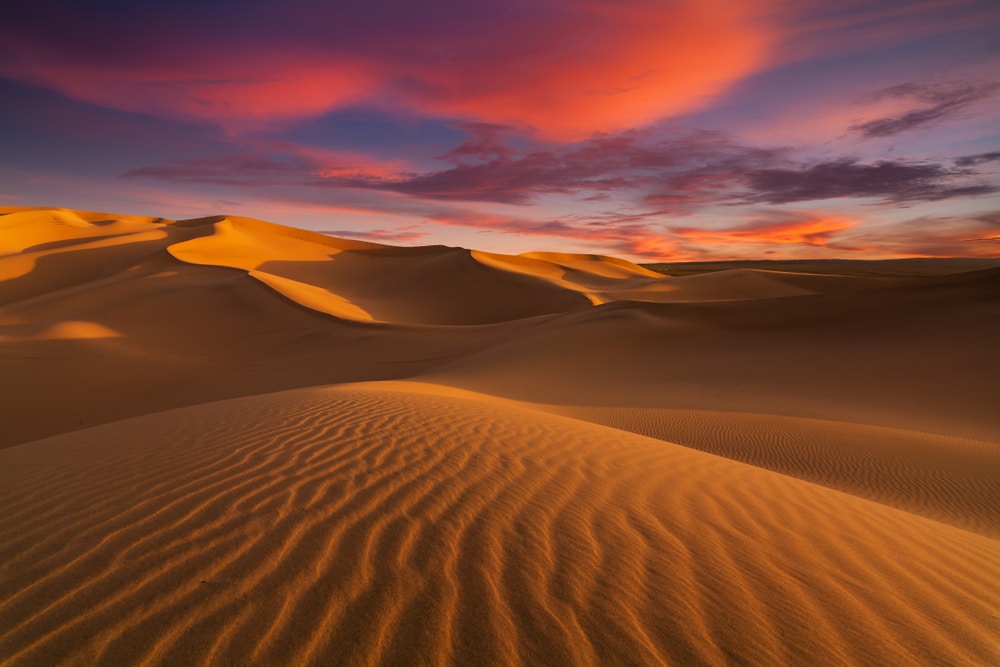
Deserts are dry biomes defined by how much average precipitation they receive each year. Temperatures don’t play a role in what makes a desert. This means that deserts can be hot or cold.
One thing that all desert biomes have in common is how dry they are. According to the National Aeronautics and Space Administration (NASA), deserts receive an average of 10 inches (25.4 cm) of rainfall per year or less.
Deserts that fall under this maximum amount of precipitation are considered true deserts. Some places are considered deserts due to other characteristics, despite occasionally exceeding 25 cm of rainfall.
Most types of deserts have very little vegetation. The vegetation they do have is able to withstand extreme conditions, with drastic temperature changes and little rainfall.
Some plants in deserts have short reproduction cycles that are completed in less than one month after a heavy rain. Animals in the desert have special adaptations that help with survival in such dry, harsh conditions.
Types of Deserts
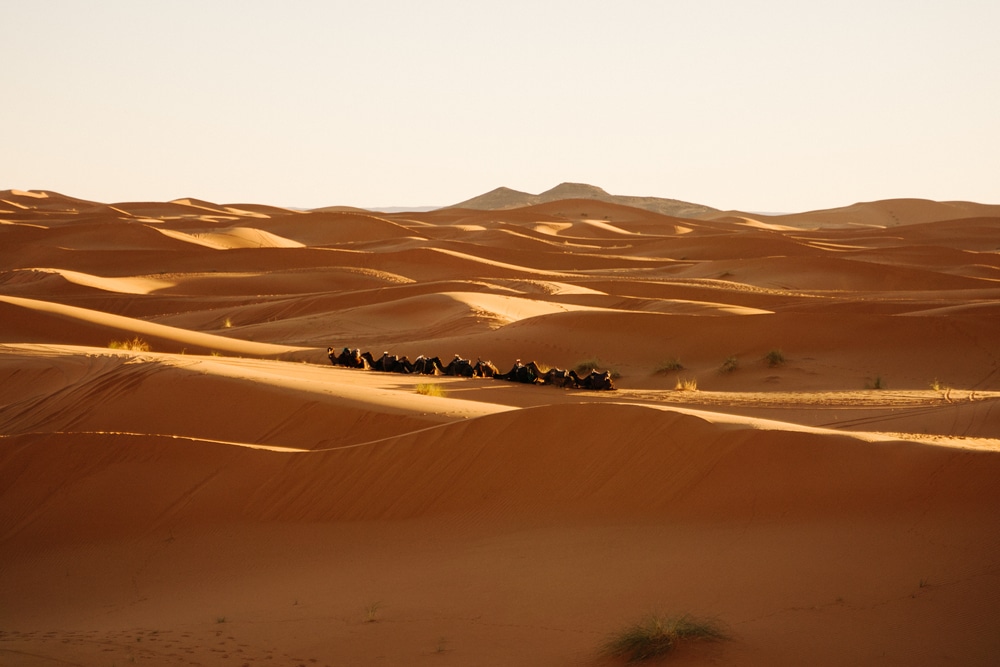
There are several types of deserts found around the world. You may be most familiar with hot deserts, but some deserts are cold or warm. These are the main types of desert biomes:
- Hot desert
- Polar or cold desert
- Semi-arid or warm desert
- Coastal desert
Hot deserts are usually found between 15° and 35° latitude. This falls between the Tropic of Cancer and the Tropic of Capricorn. Cold deserts can be found outside of these coordinates in the Arctic and Antarctic Circles.
Some examples of hot deserts around the world include the Sahara Desert, the Arabian Desert, and the Namib Desert.
Some of the world’s cold deserts include the Arctic Desert, Gobi Desert, and Antarctic Desert.
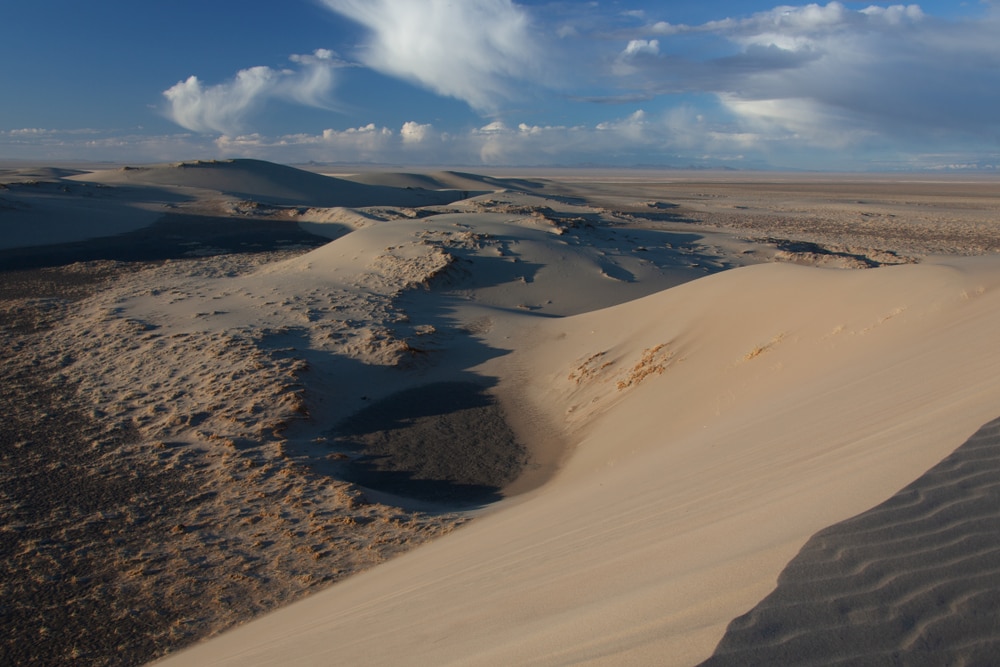
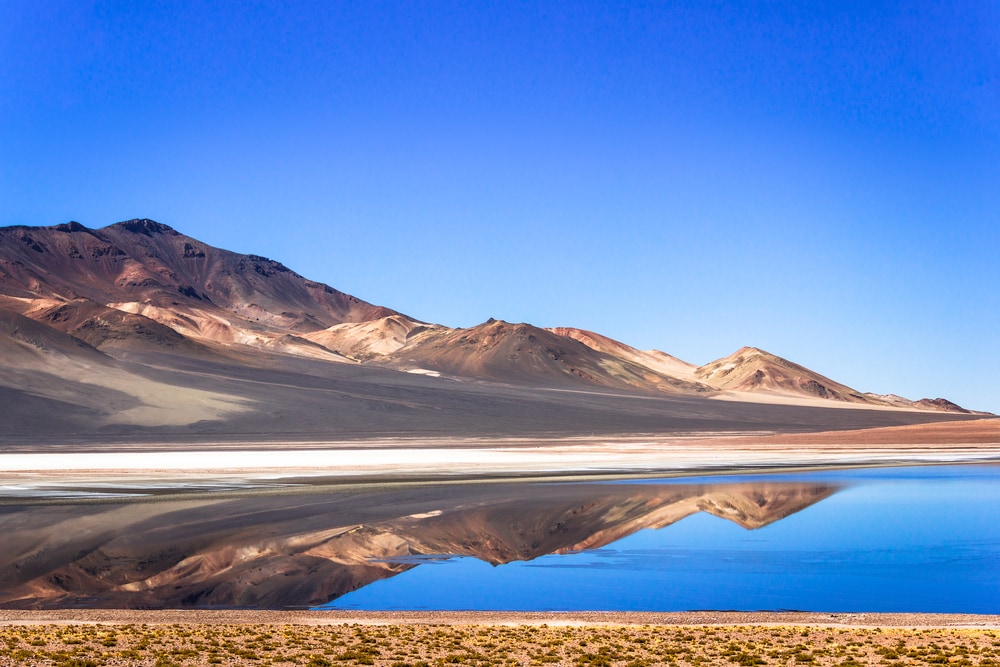
Coastal deserts are areas located along coastlines that receive little rainfall. The Atacama Desert, located in Chile, South America, is also a coastal desert. The Namib Desert, found along the southwestern coast of Africa, is also a coastal desert.
Semiarid deserts don’t have as harsh conditions compared to hot or polar deserts. However, they still receive very little rainfall throughout the year.
Hot and polar deserts are so dry that the air lacks moisture. Semiarid deserts have enough moisture in the air to create dew. Vegetation in semiarid deserts relies on dew to receive water.
What is the Largest Desert in the World?
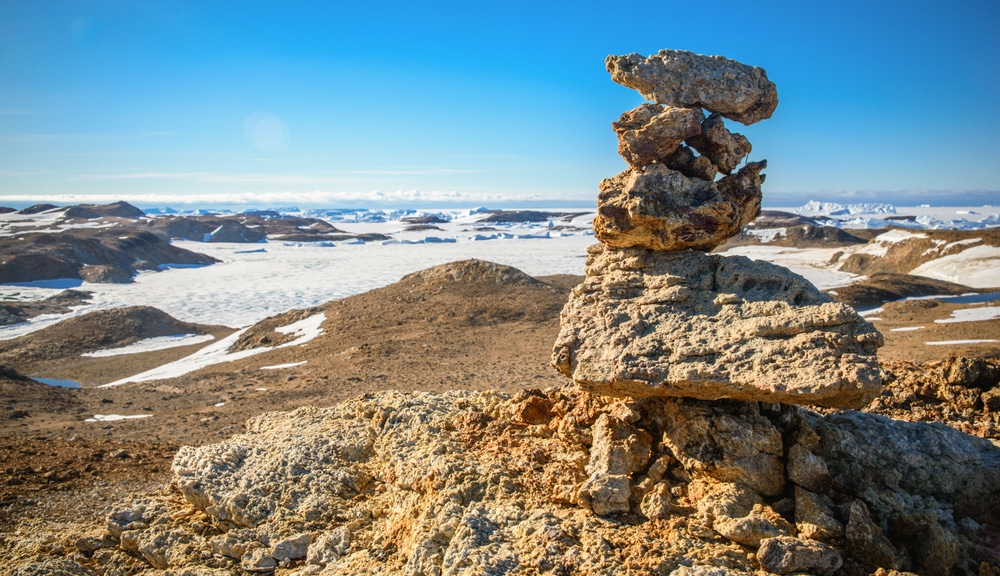
The largest desert in the world is the Antarctic Polar Desert. The desert makes up about 5.4 million square miles (14 million sq km) of the continent. Only about 110,039 square miles (285,000 sq km) are ice-free.
On top of being the coldest place on Earth, it’s also one of the driest and least hospitable. It’s so cold that scientists take turns visiting the continent to study the ice and collect data.
You may be thinking, how is the Antarctic Desert so dry when it’s almost entirely made up of solid water? Since Antarctica is so cold, the ice never fully melts. However, the effects of climate change are changing the integrity of the ice.
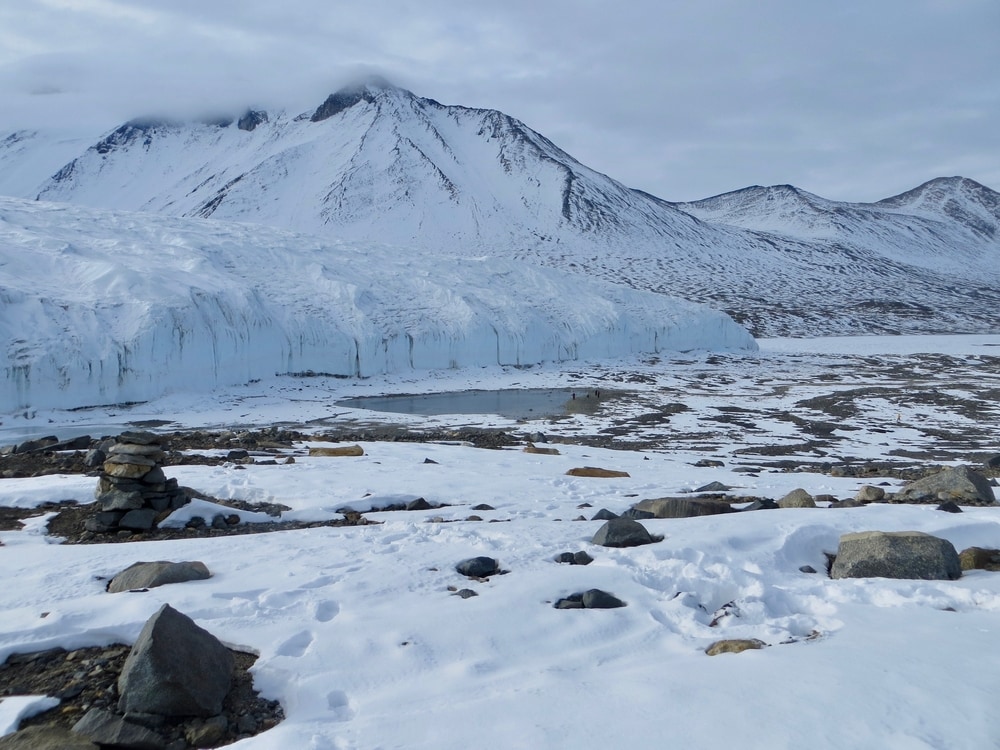
According to the National Science Foundation, about 97.6% of the continent is covered in ice. Two massive ice sheets cover the continent, including the East Antarctic Ice Sheet and the West Antarctic Ice Sheet.
The ice has built up on the continent for millions of years. The ice averages about 7,087 ft (2,160 m) in thickness! This means that it sits higher than any other continent.
Unlike other types of deserts, the Antarctic Desert doesn’t have any trees or shrubs. The only plant life capable of surviving in this polar desert is algae, moss, Antarctic hair grass, and Antarctic pearlwort.
What is the Largest Hot Desert in the World?
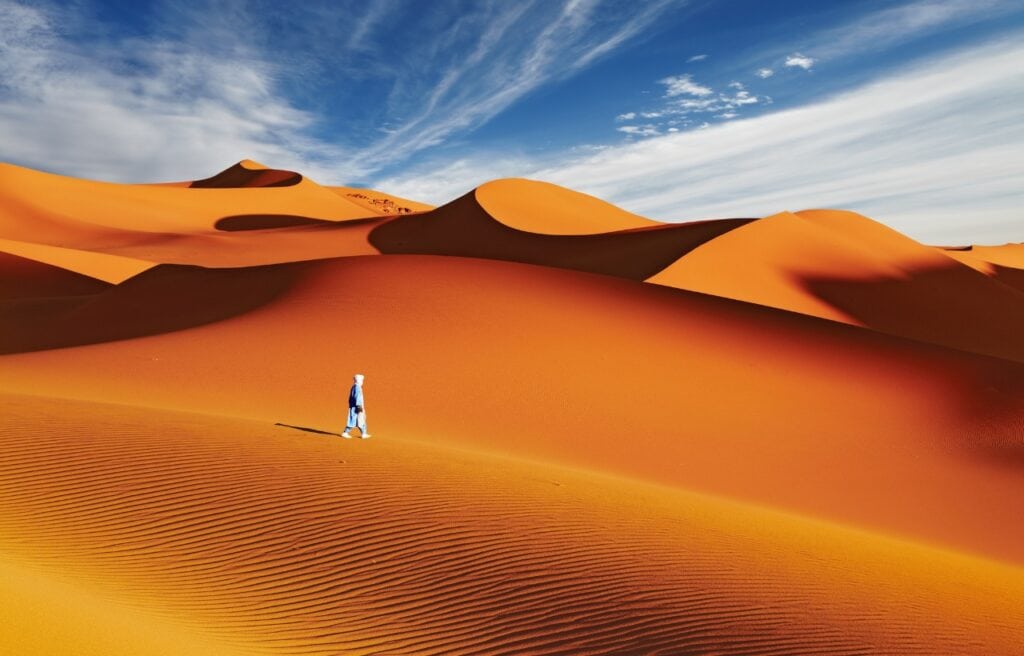
The largest hot desert in the world is the Sahara Desert, which stretches across most of North Africa. It’s the third-largest desert in the world, behind the Antarctic Desert and the Arctic Desert.
The Sahara Desert has a total area of about 3.32 million square miles (8.6 million sq km).
It stretches from the southeastern portion of Morocco and the Western Sahara territory in the west to Egypt and northern Sudan in the east. It covers most of Algeria and Tunisia in the north and Mauritania, Mali, Niger, and Chad in the south.
It receives an average of 3 inches (7.6 cm) of rainfall per year. The central part of the Sahara has the harshest conditions. It only receives about 1.5 cm or less of precipitation annually.
Temperatures vary throughout the year, with summer being the most hot and intense. These are the average temperatures of the Sahara Desert throughout the year:
- December and January – High of 64°F (17.7°C) with lows ranging between 37-41°F (2.7-5°C).
- February through April – High of 70–84°F (21-28.8°C) with lows ranging from 43–55°F (6–12.7°C).
- May – High of 93°F (33.8°C) with a low of 63°F (17°C).
- June through August – Highs ranging from 100–108°F (37.7–42°C) with lows between 72–79°F (22–26°C).
- September through November – High of 72–93°F (22–33.8°C) with lows between 48–66°F (9–19°C).
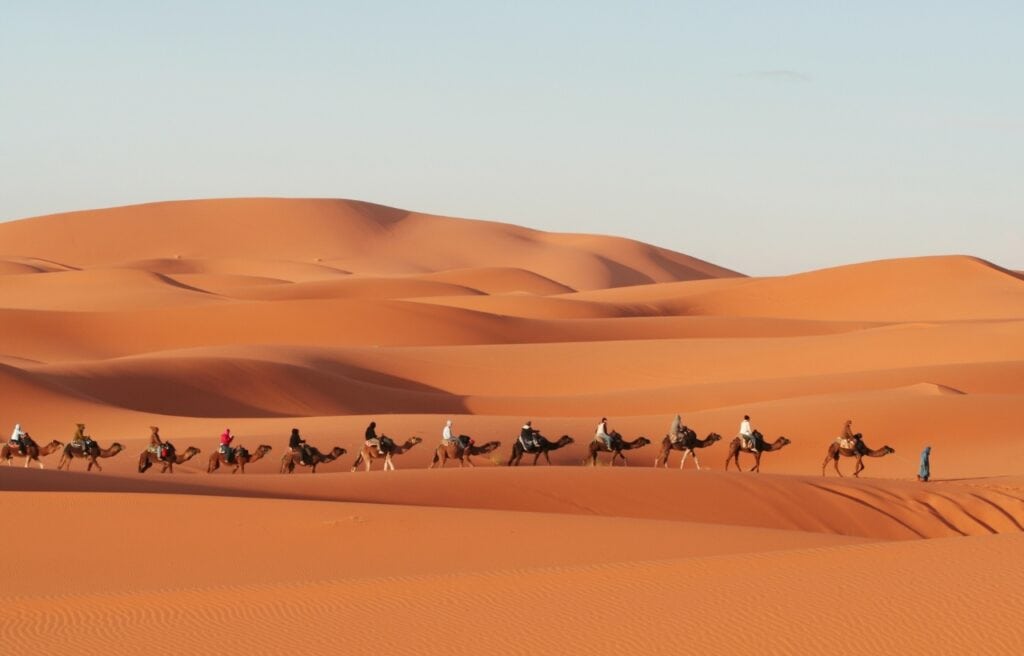
The air in the Sahara Desert is so dry that clouds usually don’t form.
The Sahara Desert is considered a hot, subtropical desert. The southern half of the desert, however, is considered tropical. Since there are two different types of climates in the Sahara, its climate conditions vary.
In the northern half, it’s characterized by extremely high daytime temperatures during the summer and cold winter nights. It has milder winters in the southern half and a dry summer with little rainfall.
The southern part of the Sahara is bordered by a semiarid region called the Sahel. It acts as a transitional zone between the Sahara and the tropical savannas found in the southern half of the African continent.
There is some debate as to when the Sahara Desert formed. Some believe that it formed sometime in the Pleistocene Epoch between 2.6 million and 11,700 years ago.
Others argue that it formed even later in the Pliocene Epoch, between 5.3 and 2.6 million years ago. Studies of the desert and its sand suggest that it was at least an arid region during the Pliocene Epoch.
What is the Largest Desert in North America?
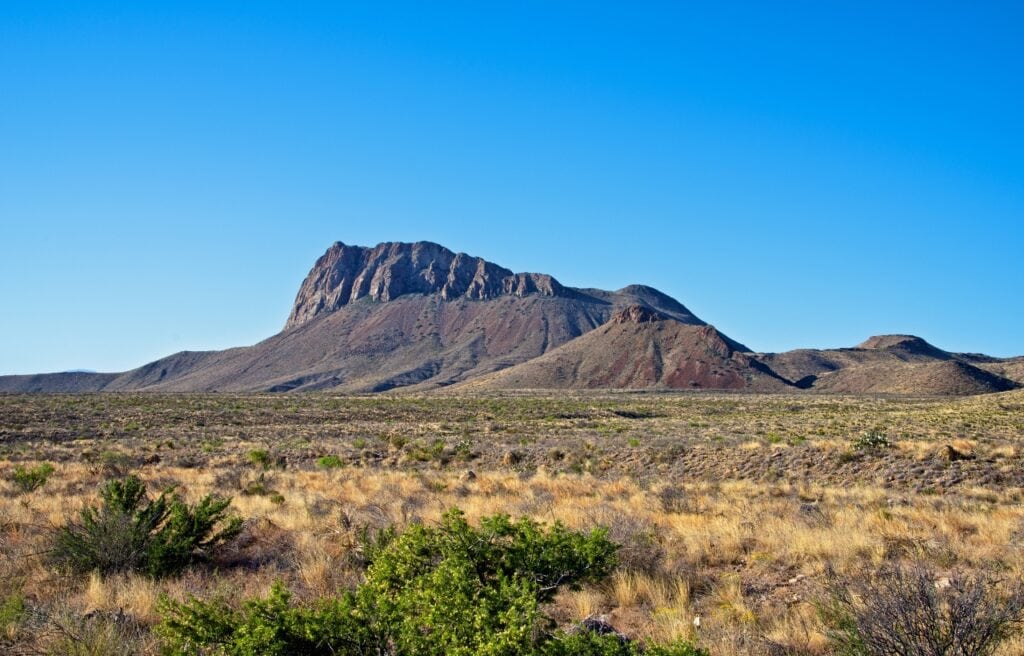
Deserts can be found in North America north of the Tropic of Cancer line. The largest desert in North America is the Chihuahuan Desert. It covers about 200,000 square miles (517,998 sq km) and encompasses parts of Arizona, Texas, New Mexico, and six Mexican states.
The Chihuahuan Desert has hot summers with infrequent downpours and cold, dry winters. Most of the precipitation comes from thunderstorms, which produce anywhere between 15 and 50 cm (5.9 and 20 in) of precipitation per year.
Temporary salt lakes and playas may form after heavy rainfall. These basins are important sites for desert animals to take advantage of readily available water sources.
The Chihuahuan Desert is an important ecosystem for many species of plants, mammals, birds, amphibians, and reptiles. It’s home to about 400 different types of birds and more than 3,000 plant species.
Some of its most notable creatures include the Mexican wolf, kit fox, and black-tailed prairie dog.
You may also like: 10 Fascinating Desert Birds And Their Unique Adaptations
Other Famous Deserts Around the World
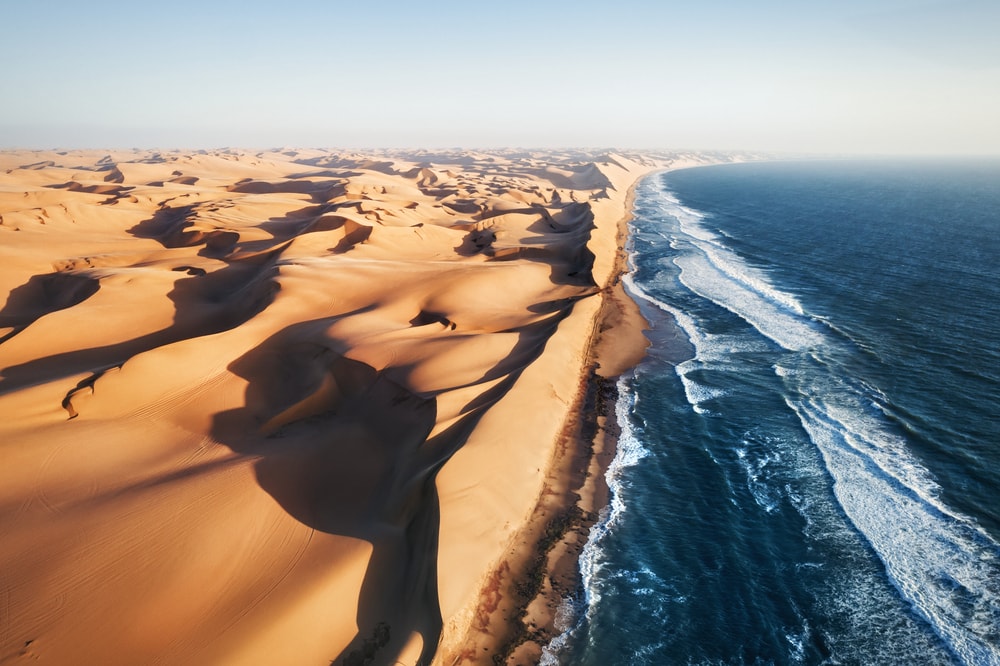
There are more than 20 deserts located around the world, all varying in size, climate, and wildlife. Most deserts lie between the Tropic of Cancer and the Tropic of Capricorn, with the exception of some situated farther north or south.
Arctic Desert
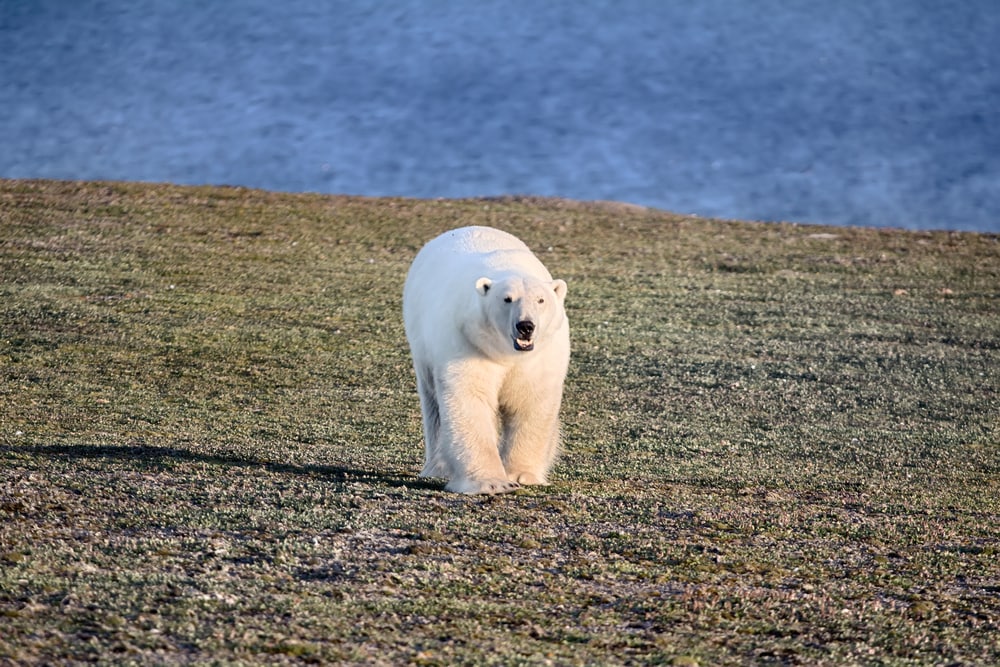
The Arctic Desert is found within the Arctic Circle in the northmost part of the Earth. The Arctic Ocean sits in the middle, surrounded by arctic lands with tundra and polar desert biomes.
Most of the soils in the Arctic region are permafrost. This means that the ground stays frozen solid for long periods of time.
During the summer, the sun shines all day and night. During the winter, the sun disappears, and it stays dark until early spring. Most of the Arctic is considered a tundra biome, but some parts are tundra and polar deserts.
The Arctic region supports a variety of wildlife that has adapted to the extreme cold. Some of these animals include:
- Polar bears
- Walruses
- Arctic foxes
- Caribou
- Beluga and bowhead whales
Some Russian and Norwegian islands and archipelagos in the Arctic Ocean make up the Arctic Desert.
The northernmost inland regions in the Arctic have the most extreme conditions. For example, parts of Siberia experience temperatures that dip below -40°F (-40°C) in January.
Coastal regions are less harsh, with an average temperature of about 50°F (10°C). Coastal regions also experience the most precipitation. Winters are the wettest, with up to 125 cm (49.2 in) of precipitation each year.
Below-freezing temperatures occur throughout the year in the Arctic Desert. Short periods of above-freezing temperatures occur in the summer. During this time, some of the ice will melt. However, the ground stays frozen.
Great Australian Desert
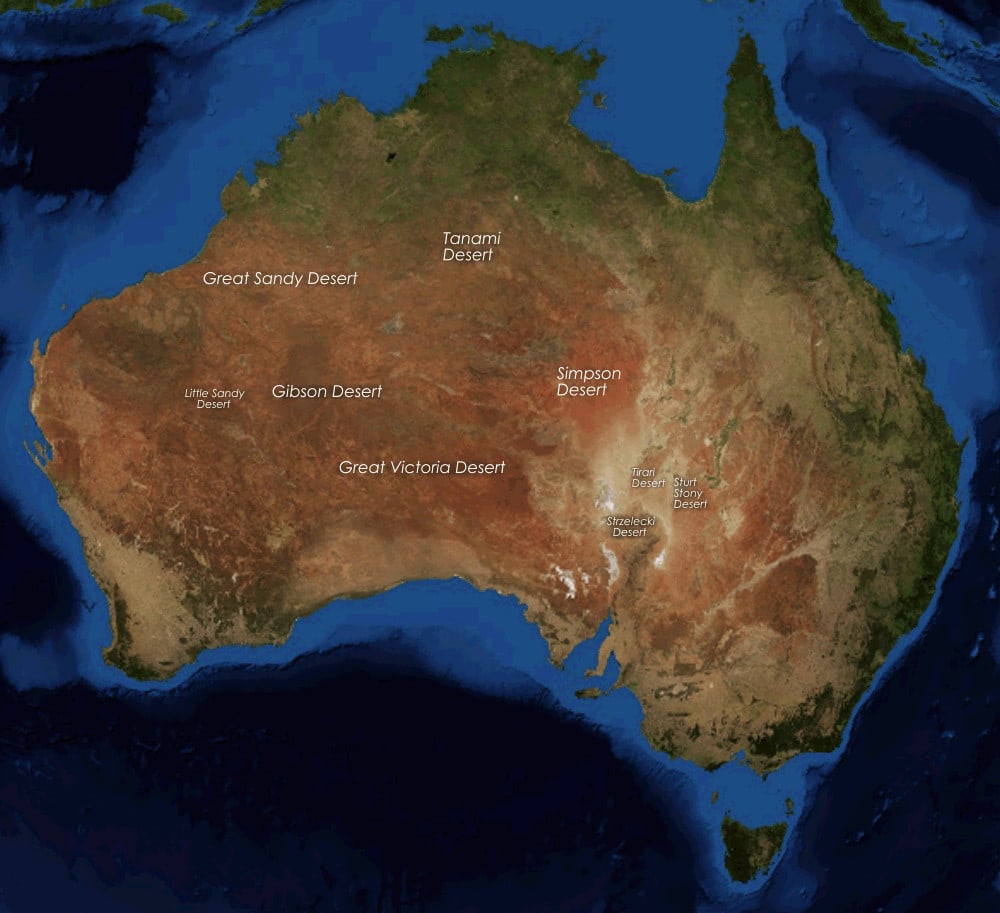
CC BY-SA 3.0 / wikmedia commons
The Great Australian Desert encompasses several deserts scattered about the isolated continent. It includes nine different deserts, making it the fourth-largest desert in the world behind the Antarctic, Arctic, and Sahara deserts.
The largest desert in Australia is the Great Victoria Desert in South and Western Australia. It covers about 134,653 square miles (348,750 sq km). It makes up about 4.5% of the total area of Australia.
The Great Sandy Desert is the second largest, covering about 103,186 square miles (267,250 sq km).
Australian deserts are classified as hot, arid deserts. Any precipitation comes in the form of rainfall. In the summer, average temperatures usually exceed 95°F (35°C).
The Australian deserts support a wide variety of reptiles, desert-adapted mammals, and desert shrubs and grasses. Some species that can be found in the deserts of Australia include the great desert skink, greater bilby, and black-footed rock wallaby.
Arabian Desert
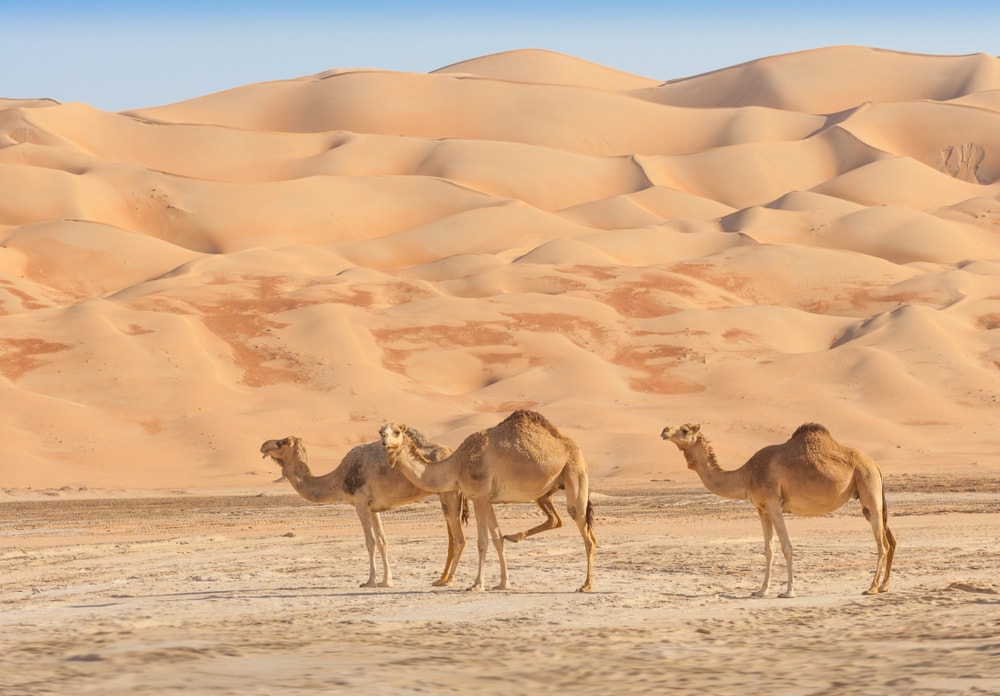
The Arabian Desert is the largest hot, tropical desert in Asia. It covers about 900,000 square miles (2.3 million sq km), making up most of the Arabian Peninsula.
The northernmost portion of the desert meets the Syrian Desert in Jordan and Iraq. Its southern border ends as it approaches the southern coast of the peninsula in Yemen and Oman.
The Arabian Desert is characterized by several topographic features, including plateaus, volcanic fields, and highlands.
The air of the Arabian Desert is most dry in the interior parts of the ecoregion. Most areas receive no more than 4 inches (10 cm) of rainfall per year.
The summer heat is extreme, with low humidity levels. Inland areas of the desert can experience searing temperatures up to 120°F (49°C). Areas closer to the coastline have higher levels of humidity and may experience more rainfall.
Gobi Desert
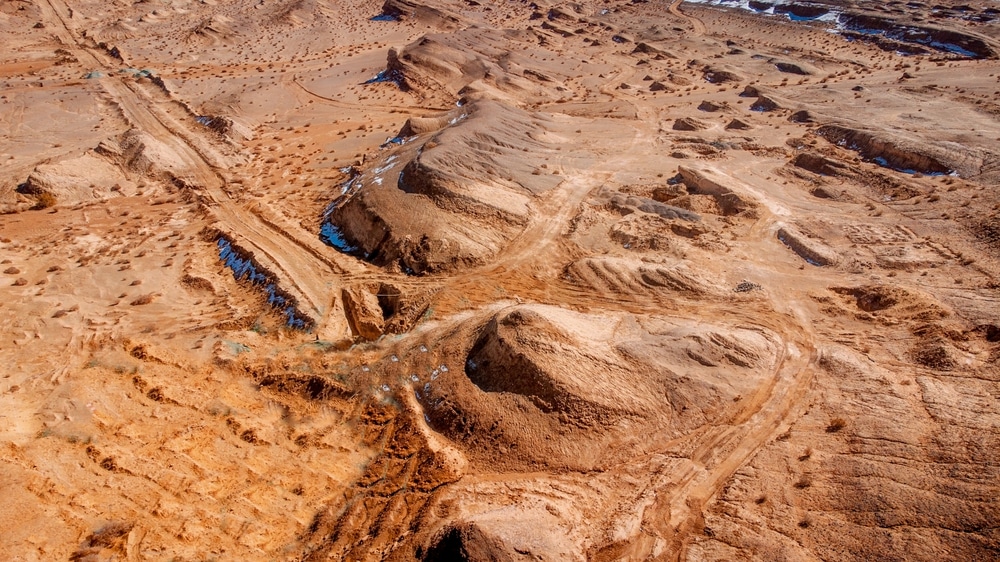
The Gobi Desert is a cold desert located in southern Mongolia and northwestern China. Although it’s a cold desert, it doesn’t have the same climate as polar deserts. Its temperatures are known to fluctuate drastically within just 24 hours.
Temperatures can dip below -4°F (-20°C) in the winter and rise to over 90°F (32°C) in the midst of summer. Annual precipitation ranges between 4 and 20 cm (1.6 and 7.9 in), depending on the location.
Surrounding areas, including the Siberian steppe, can influence the climate. The northern part of the desert is more dry and cold during the winter months. The vegetation in this region is more sparse compared to other parts of the desert.
Several ecoregions make up this desert, which includes semi-deserts and steppes.
Studies have shown that the Gobi Desert is experiencing desertification. This means that it’s becoming drier and expanding with extremely low levels of biodiversity.
Namib Desert
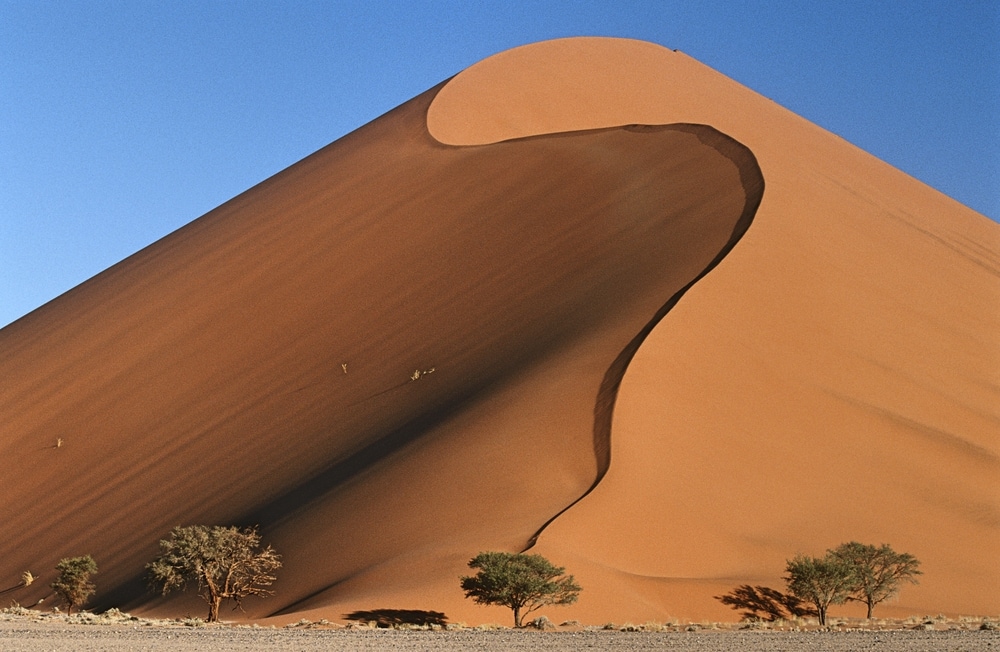
The Namib Desert is a coastal desert situated along the coastline of Namibia. It’s bordered by the South Atlantic Ocean. The northernmost portion of the desert stretches up to Equimina, Angola, and travels south to the Western Cape of South Africa.
Part of the Namib meets with the Karoo Desert in South Africa and the Kaokoveld Desert in Angola. Together, these deserts make up a total area of about 311,198 square miles (806,000 sq km).
Some of the driest areas of the Namib receive 1 cm or less of precipitation per year. Daytime temperatures can reach more than 100°F (37.7°C) during the day and drop to a freezing 32°F (0°C) at night.
Its most notable feature is the towering, shifting sand dunes composed of materials transported by prevailing winds and ocean currents. The coastal fog also influences the development of the dunes. Many of the dunes reach more than 984 ft (300 m) in height.
You may also like: 12 Different Types Of Ecosystems And Why They Are Important
What is the Smallest Desert in the World?
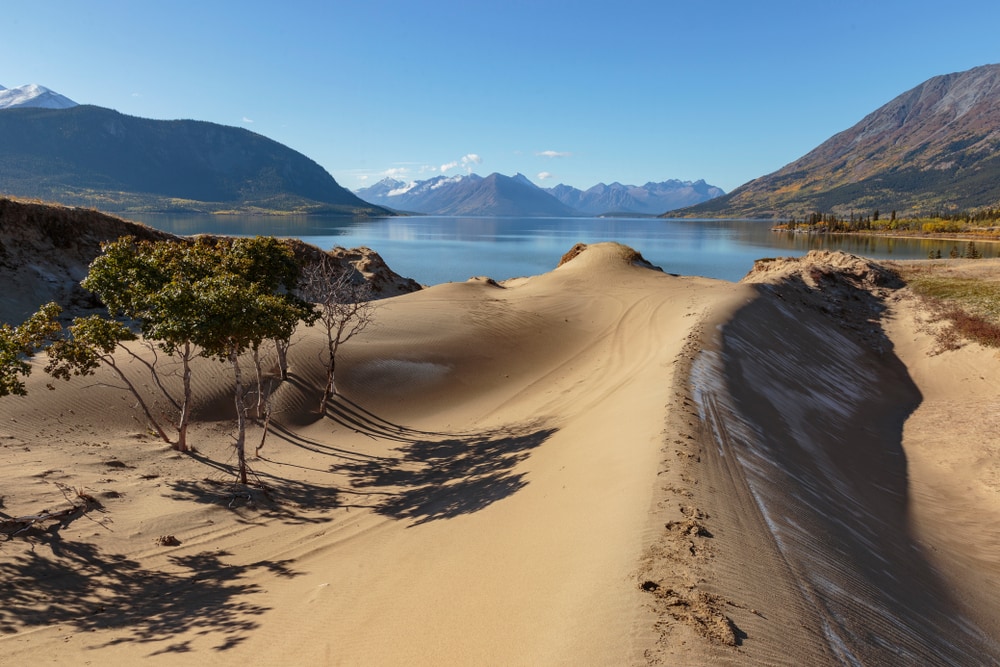
The location of the smallest desert in the world might surprise you. Found near the southern border of the Yukon Territory in Canada, the Carcross Desert is the smallest “desert” in the world.
Some may not consider it a true desert because it doesn’t fall within the average minimum precipitation threshold. It covers a total area of just 1 square mile (2.6 sq km).
Mountain ranges located to the west and south block rain clouds from coming over, creating a rainshadow. This causes the area to receive infrequent rainfall. However, the average annual rainfall is just above that 10-inch (25.4 cm) cutoff.
Climate Change and Deserts
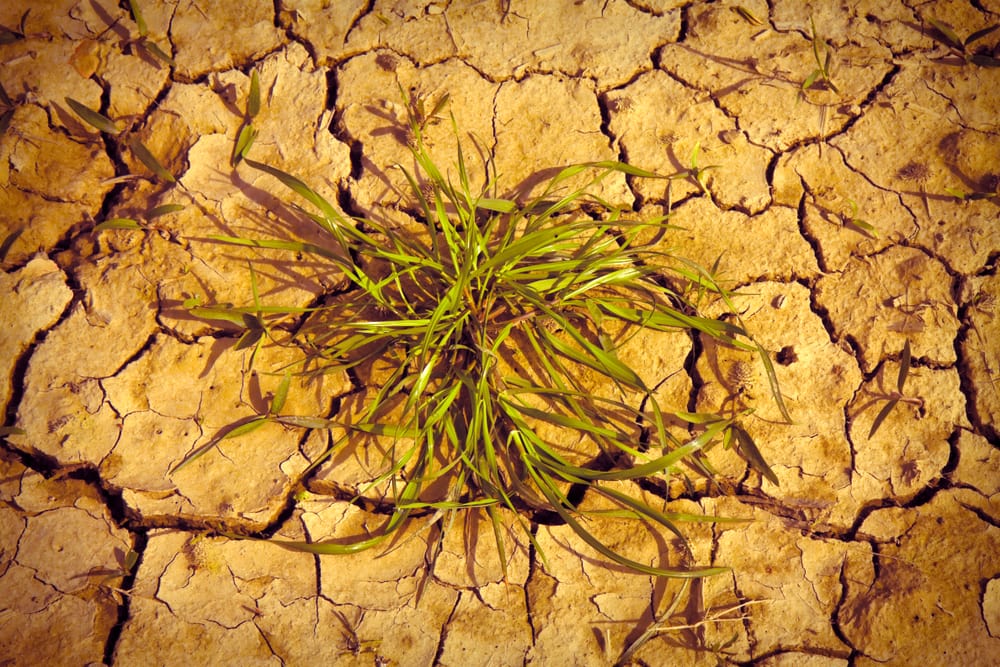
Human-driven climate change and land degradation are causing changes in desert biomes around the world.
A study conducted in 2018 determined that the Sahara has expanded by 10% in the past 100 years. Scientists believe that an increase in greenhouse gasses and aerosols released into the atmosphere has played a significant role.
Lower amounts of rainfall have contributed to its expansion, making it more dry than before. Desert biomes are especially vulnerable to human-driven climate change.
As the driest biome on Earth, deserts have a fragile climate that can be negatively impacted by slight changes in rainfall and temperature.
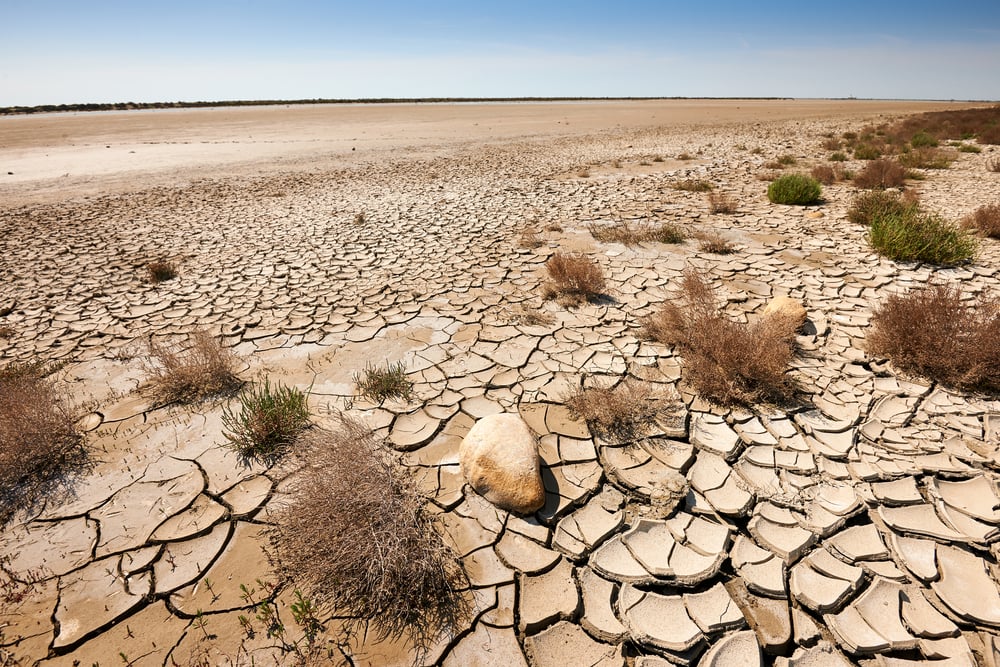
Desertification is another huge concern for deserts and other arid regions. Desertification is the degradation of arid lands due to several factors, such as climate change and land mismanagement.
A 2021 case study to analyze how climate change is affecting desert ecosystems highlights concerns over the loss of a keystone plant species in the Namib Desert. The plant, Welwitschia mirabilis, has shown signs of future displacement and reduction of distribution as a result of climate change.
Climate change can reduce the distribution and populations of animals and vegetation that have managed to adapt to their already harsh environment.
You may also like: Unveiling Earth’s Wonders: 26 Different Types Of Biomes Explored
Desert Fun Facts
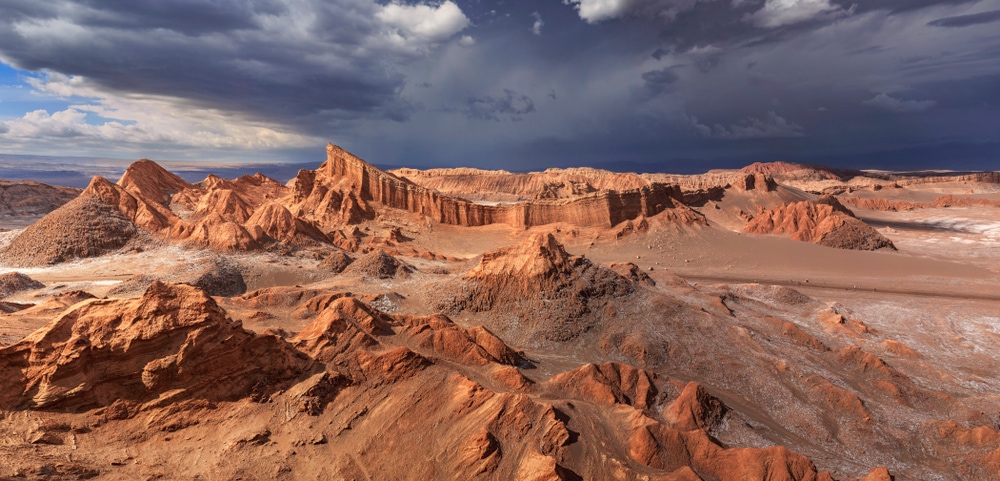

The Atacama Desert is one of the driest deserts in the world.
Located in the northern part of the Atacama Desert in Chile, Arica holds the record for the longest dry period. For 14 years, between 1903 and 1918, Arica didn’t receive any type of precipitation.
At one point for a 59-year period, its average annual precipitation level fell below 1 cm. Extremely rare rain events can actually be devastating for plants that have adapted to such long dry spells.

Some desert plants germinate and bloom within hours.
Due to low amounts of precipitation, some desert plants can complete their entire reproduction cycle within a few hours or days.
Plants living in desert environments take advantage of what little rainfall they get.
After infrequent heavy rains, some plants are capable of germinating and blooming within short periods of time. The seeds lay underground in a dormant state, awaiting rainfall to germinate and develop.

Death Valley, California, holds the record for the highest air temperature on Earth.
In the heat of the summer of 1913, Death Valley reached an unbelievably high air temperature of 134.1°F (56.7°C).
Death Valley is located in the northern part of the Mojave Desert. Air temperatures during the summer consistently hover over 100°F (37.7°C).
Death Valley receives an average of less than 2 inches (5 cm) of rainfall per year. The mountain ranges standing between Death Valley and the Pacific Ocean contribute to its low precipitation levels.
You may also like: 20 Amazing Animals In The Tundra (Facts & Photos)
Desert FAQs
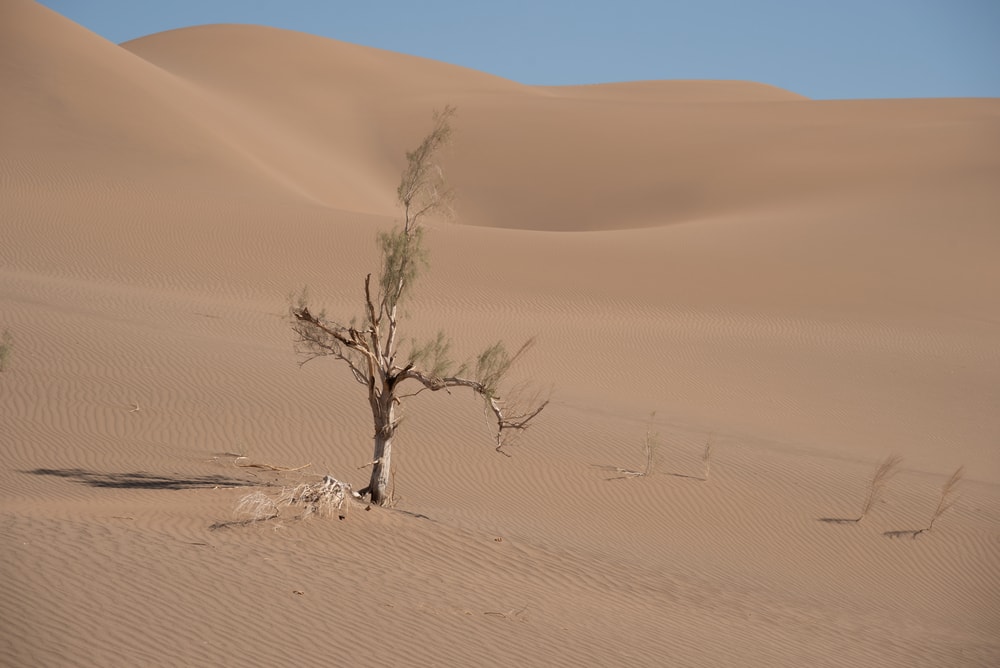
What is the hottest desert in the world?
Scientists studied the temperatures of the Lut Desert for seven years and named it one of the hottest deserts in the world.
The Lut Desert is located in southeastern Iran. It’s broken the record for the highest surface temperature in the world, reaching 159.26°F (70.7°C).
The surface temperature heats up to blistering temperatures because of the dark rocks that soak up the heat of the sun.
What is the coldest desert in the world?
The Antarctic Desert is not only the largest but also the coldest desert in the world.
Although the Arctic Desert is very cold, the South Pole is even colder. The built-up ice brings Antarctica up to a high elevation, contributing to its freezing temperatures.
During the winter, Antarctica has an average temperature of -76°F (-60°C). During the summer, temperatures are still below freezing, averaging -18°F (-28.2°C)!
What types of animals live in the desert?
Reptiles thrive in hot desert environments because they can withstand extreme temperatures. Many desert animals come out at night since it’s cooler.
Small mammals and reptiles burrow into the sand or build complex burrows to stay out of the heat.
Large mammals aren’t very common in most hot deserts. Only large mammals with special adaptations can live in hot deserts, such as camels and antelopes. Animals that live in polar deserts have different adaptations, such as extra fur, to deal with the extreme cold.









